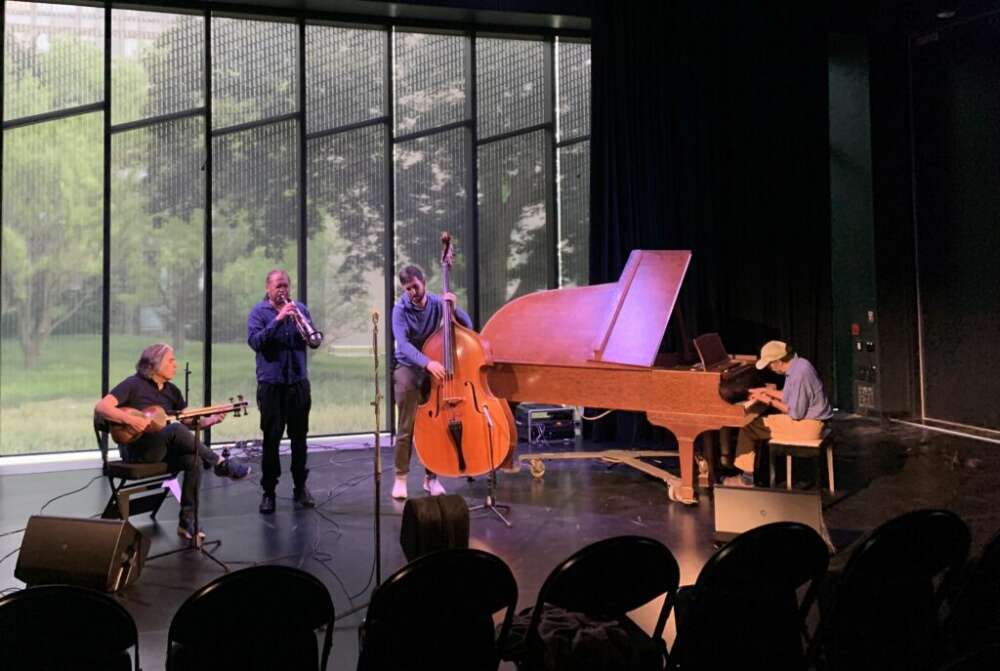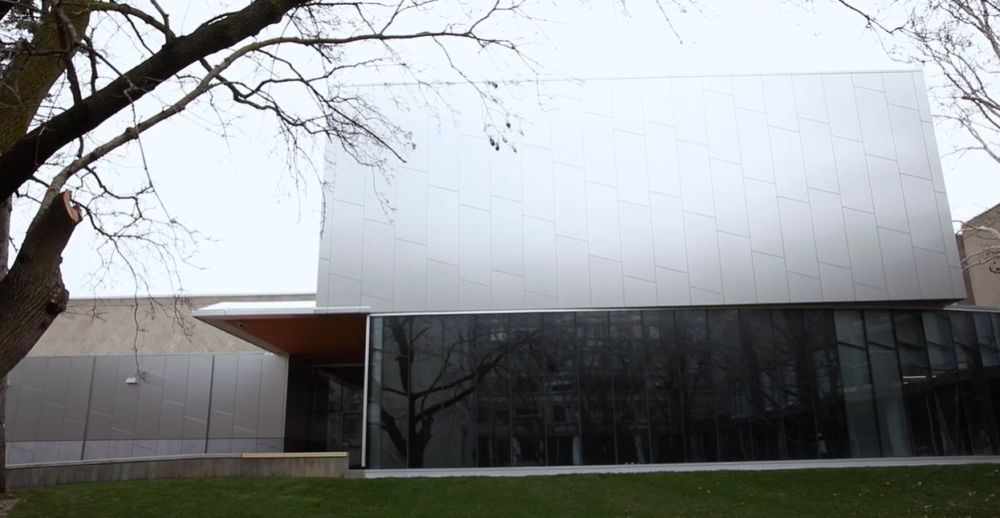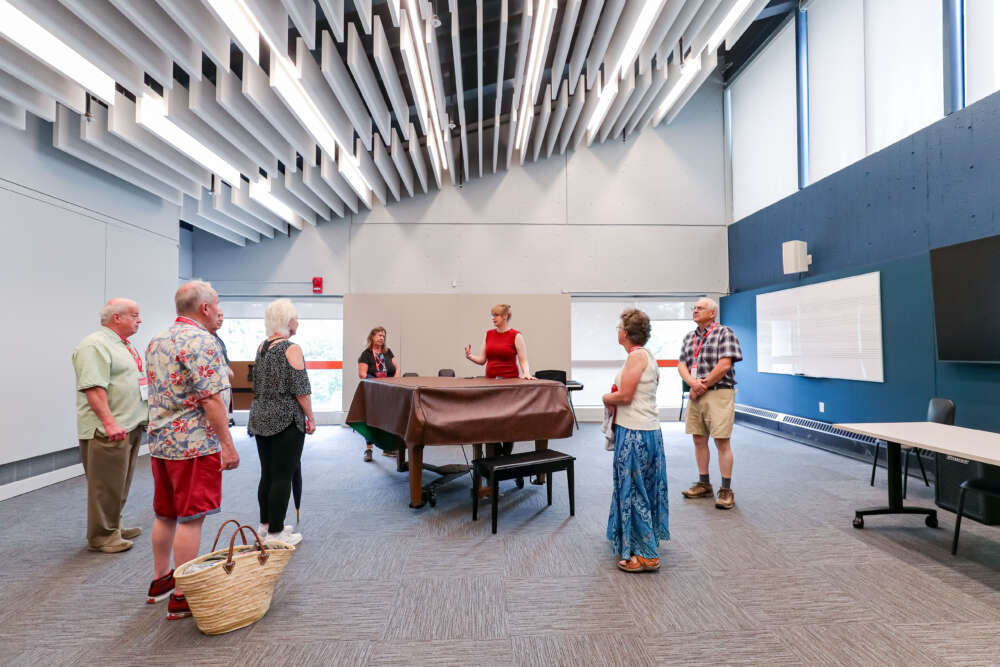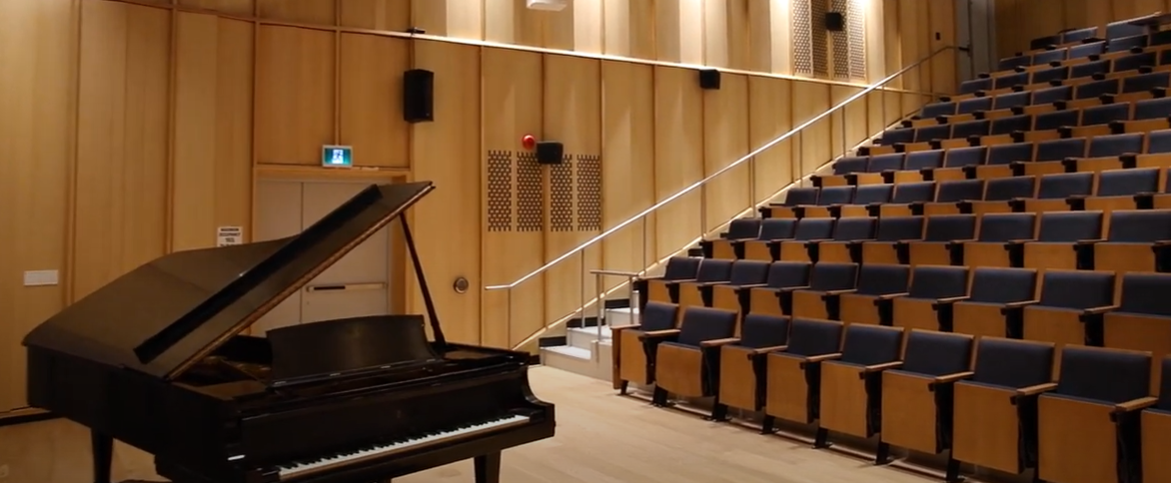A brand-new arts teaching, performance and research space has opened at the University of Guelph that will enhance interdisciplinary collaboration and inspire the next generation of performers.
The Arts Research Centre, known as the ARC, is the new home for College of Arts theatre studies and music students, as well as home to research associated with the International Institute for Critical Studies in Improvisation. It features updated and light-filled teaching and performance spaces, including a 140-seat music recital hall, a 120-seat performance theatre and a 130-seat improvisation space called ImprovLab.
Already, the ARC has become a Guelph community hub, hosting award shows, Guelph Jazz Festival colloquium events, music rehearsals and more, with the opportunity to host more than 50 public events a year.
“The ARC is bringing faculty, staff, and students together to collaborate and work together in a way that breaks down disciplinary boundaries and opens up new creative avenues,” said Dr. Samantha Brennan, dean, College of Arts.
“The flexibility of the spaces coupled with the ARC’s advanced technology broadens the horizons of our research possibilities. U of G’s dedication to comprehensive education, and our commitment to interdisciplinary thinking are reflected in the research and teaching now happening in this new space, such as Dr. Peter Kuling’s work with VR, and the new Bachelor of Creative Arts, Health and Wellness.”

Fully accessible, flexible theatre and improv spaces
Both the performance theatre and the ImprovLab provide a fully accessible “black box” theatre design. This unique approach to teaching and performance allows for all seating, sound and lighting to be movable, creating infinite possibilities for arrangements, experimentation and immersive performances.
Students are able to learn about the entire theatre production process, from acting to directing, scriptwriting, set design and costume creation to develop into well-rounded theatre artists.
Researchers and artists will use ImprovLab to collaborate on research focused on the social impacts of improvisatory artistic practices and for boundary-pushing performances.
Music students will benefit from the new teaching spaces, digital music studio and recording studio equipped with the latest acoustic technology and hardware to learn all aspects of music production in addition to musical skill development.
The ARC is the result of a $25-million renovation of the MacKinnon Building and was funded largely by the University of Guelph, the Canada Foundation for Innovation (CFI), and donors invested in the arts.

ARC to be used for teaching, research and community events
“I am so excited that we’ve been able to build a state-of-the-art, technologically advanced research and performance facility, ImprovLab, at the heart of our campus,” said Dr. Ajay Heble, director of the IICSI, who led the CFI funding effort.
“This CFI-funded facility promises to be a groundbreaking venue with far-reaching impacts and benefits for IICSI, for U of G, for our partners and stakeholders, and for the broader arts community.”
Currently, more than 2,000 students and 85 staff, graduate students and faculty use the facility, which is expected to host dozens of events with engaged community partners.
“What is happening at the ARC at the University is important to every student on campus,” said Bill Laidlaw, a major donor to the ARC and U of G history alumnus. “The arts are the springboard for the music you listen to, the movies you view, the books you read and your view of the world and all its beauty.”
The original MacKinnon building was constructed in 1967 using “brutalism” architecture, a popular mid-century style and was one of the first concrete buildings completed in the University’s expansion.
Diamond-Schmitt Architects began the renovation planning in 2018, with a vow to honour the building’s historical heritage.
This modernization enhances that aesthetic while adding an abundance of light-filled spaces that connect the building to the larger campus.

Contact:
Erica Charlesworth
College of Arts
charlese@uoguelph.ca
